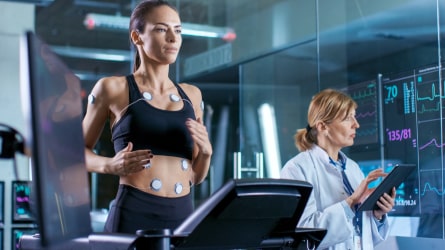ZDNet published an article in April featuring VigiLife’s sensors and software technology offering, SafeGuard. Called “a new class of worker wearables”, it outlines our approach to intelligent monitoring and worker safety describing it as a combination of environmental, human, and locational data from the worker, analyzed in the cloud, and providing real-time detection and alerting through the SafeGuard software platform.
Over the last five years, VigiLife’s parent company, Aptima, was fortunate to benefit from direct investments from the DoD and private sector to develop this technology. As the article cites, VigiLife is applying this solution to any multi-domain organization requiring personnel to operate in environments that put worker health & safety at risk.
This is more than just fitting together sensors and software for worker safety. VigiLife is commercializing “a multi-use solution that uses wearables and intelligent monitoring as its core.”
The article’s author also brings up topics of major concern related to adoption challenges, corporate safety management initiatives, employee privacy/confidentiality, compliance, and both the accuracy and durability of sensors. Industry leaders we’ve spoken with who are running safety initiatives ask, “can we really do this”? They wonder about the feasibility of adopting the technology and navigating these issues. Worker privacy and labor union approval are ongoing and justified concerns, as are regulatory concerns related to OSHA, MSHA, etc.
Worker Profiles can be Anonymized
Our approach to these topics has been to emphasize “health & safety monitoring” vs. “performance monitoring.” Although long-term data retention would allow for personalized exposure dosimetry, VigiLife’s SafeGuard system can be customized to delete the collected data at the end of every shift. Worker profiles can also be anonymized where not even names are tracked, but rather unidentified representations like “Worker 1, Worker 2, Worker 3,” etc.
In our demonstrations of the SafeGuard solution, employees can see and feel how the wearables and monitoring system work. We encourage in-depth conversations that show how data can be cleared every day and how it can be used for preventive alerting, optimized work cell design, and increased overall team efficiency.
Some have said that since our first customer deployment is with the Air Force, it would make sense that their adoption of SafeGuard would have been easy because the military can mandate the use of wearables among its personnel. Not true! Our experience has shown that even with “defense” clients, the vast majority of their workforce are civilians, many of whom are part of a unionized workforce. Our partnership approach, which is union-friendly, has led to the development of a system that is welcomed by worker and executive staff alike.
Health and Safety of Workers a National Priority
Lastly, there’s a mention of national policy influence on this type of technology adoption. In January, President Biden signed an executive order seeking to protect worker health and safety and encouraging employers to provide more resources to protect employees. Mostly coming from a focus on COVID-19, there’s also follow-on interest in technological advances to improve the physical work environment and prevent injury and death. “Ensuring the health and safety of workers is a national priority and a moral imperative,” Biden says.
With this executive order likely foreshadowing related legislation to follow, it becomes clear that employers will need a cost-effective way to provide continuous oversight of their most precious asset: their people. Although 1:1 human oversight can be effective, it’s simply not economical in most environments. This writeup by ZDNet points to the need for technologies like SafeGuard to serve as personnel protection in risk-laden environments. Although the COVID-19 pandemic’s adverse impact will hopefully dissipate soon, the need for preventive health & safety monitoring tools will not.
We at VigiLife look forward to addressing ongoing policy matters as they relate to our technology offerings. SafeGuard has the capability to track core body temperature as well as persistent cough and significant heart rate changes. Thus, it can provide early warning of physiological anomalies and their impact on worker health & safety. The intelligent monitoring, related proprietary analysis in the cloud, and real-time detection and alerting set SafeGuard apart as a “new class of worker wearables.”
The article by ZDNet can be found here. We also invite readers to sign up for VigiLife’s monthly newsletter at the bottom of our website.

